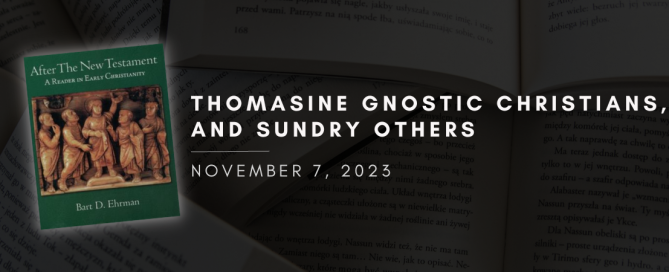The Most Famous Non-Canonical Gospel: The Gospel of Thomas
We've talked about Gnosticism and in the previous post I mentioned Gnostic groups connected with "Thomas," allegedly the (twin!) brother of Jesus. There are a number of writings written in the name of Thomas, the most famous of which is the Gospel of Thomas discovered at Nag Hammadi. I haven't talked at length about it on the blog for several years now, so it seems like a good time to return to it here. This will take three posts. The one today is a broad introduction to what the Gospel is and what it contains. I have taken this from my textbook, The New Testament: A Historical Introduction to the Early Christian Writings. ****************************** The Gospel of Thomas is without question the most significant book discovered in the Nag Hammadi library. Unlike the Gospel of Peter, discovered sixty years earlier, this book is completely preserved. It has no narrative at all, no stories about anything that Jesus did, no references to his death and resurrection. The Gospel of Thomas is a collection of 114 sayings [...]

